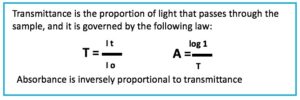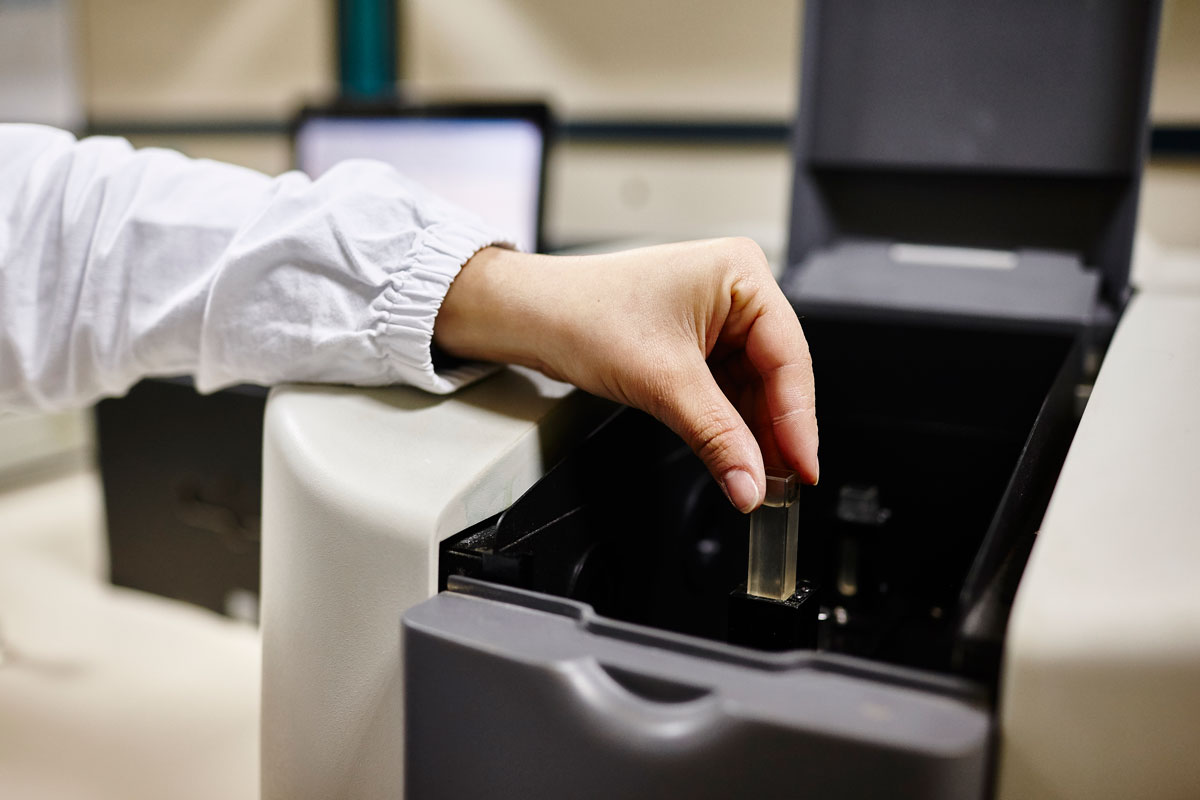OUR LABORATORY IS EQUIPPED WITH VARIOUS EQUIPMENT AND CAN MEET VARIOUS REQUIREMENTS OF CHEMICAL ANALYSIS AND METALLOGRAPHIC ANALYSIS.
FOR THE SELECTED INSTRUMENT, WE ILLUSTRATE THE FEATURES IN DETAIL, THE OPERABLE FUNCTIONALITY AND ANALYSIS, IN COLLABORATION WITH Tecnologie Superficiali Srl.
SPECTROPHOTOMETER
What is a spectrophotometer and what is it used for?
The spectrophotometer is a tool that is used to read the absorbency of the solutions at a certain wavelength and to estimate the concentration (absolute or relative).
This tool has a significant importance in chemical, biological, and laboratory analysis, as it is used to verify the quality of the sample examined. This technique is applied in the qualitative and quantitative determination of numerous substances in the chemical, environmental, pharmaceutical and food sectors.
Our chemical laboratory is equipped with a Jenway 6300 spectrophotometer.
What can we analyse and determine at Metalcoating?
- measuring light absorption of a substance
- qualitative, semi-quantitative and quantitative analysis of a concentration. For qualitative measurement, it includes the determination of the presence or absence of a substance characterized by a specific light absorption; for quantitative or semi relative it means the estimate of whether a different concentration ratio exists between different samples by identifying those most rich (or lacking) in the test substance. For quantitative measurement, on the other hand, this mean the exact estimate of the content of a given element (extent possible via the compilation of a calibration curve and the availability of standard of known concentration).
Characteristics of the instrument
- able to cover a wide range of wavelengths, in particular from 320nm to 1000nm.
- It has different modes of measurements which measure for absorbency, for the % of transmittance and concentration.
- the capability of interfacing to the analogue and serial output (RS232).
- The optical system is independently housed and isolated from the lenses to give maximum protection from environmental contamination.
- equipped with a mechanically rigid structure that allows it to provide a system with a fast warm-up, low drift and high reliability.
Principle of operation
There are four main components of a spectrophotometer. These are a light source for emitting a high and constant amount of energy in the range of full wave lengths; a method for separating the light into discrete wavelengths; a sample support and a light detector.
The light from the halogen lamp to pre-focused tungsten is focused on a reticulum with 1200 lines per millimetre, which separates the light into discrete wavelengths. The spectrum of the diffracted light then passes through a further slit and a lens before passing through the sample, placed in the room, from left to right. The light not absorbed by the sample is transmitted through a collection lens and the signal detector. The detector is a photodiode and is mounted directly on the PCB detector that is used to calculate the % of transmittance. The result is displayed either as a % transmittance or absorbance on the instrument display. The sample is measured at a given wavelength at a point in time. There is also the mode of measurement of the concentration which allows for simple concentration measurements. In this measurement mode, it is possible to calibrate compared to a standard, at a known concentration to, or use an internal standard, as known factor. Also in this case the sample is measured at a given wavelength at a point in time.
Spectroscopy theory
The UV-visible spectroscopy is the measurement of light absorbance at a specific wavelength in a sample. This is used to identify the presence and concentration of molecules in the sample. The Lambert-Beer law is used to relate the absorption of light with the properties of the sample which the light passes through. The Lambert-Beer law states that:

This law shows that the absorbance is linear to the concentration, but this is true only for low concentrations. For absorbance levels above 3 the concentration begins to move away from the linear relationship.






